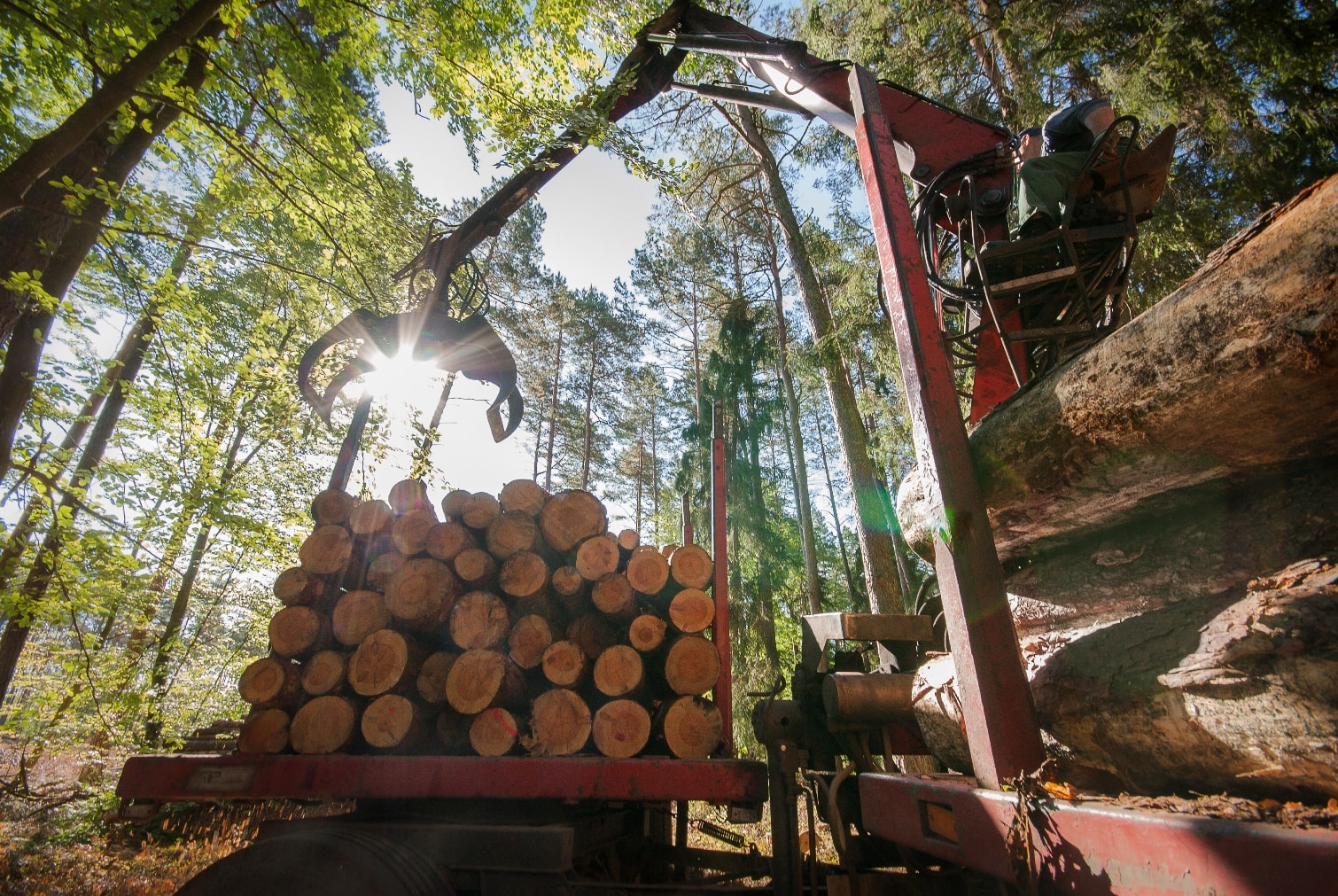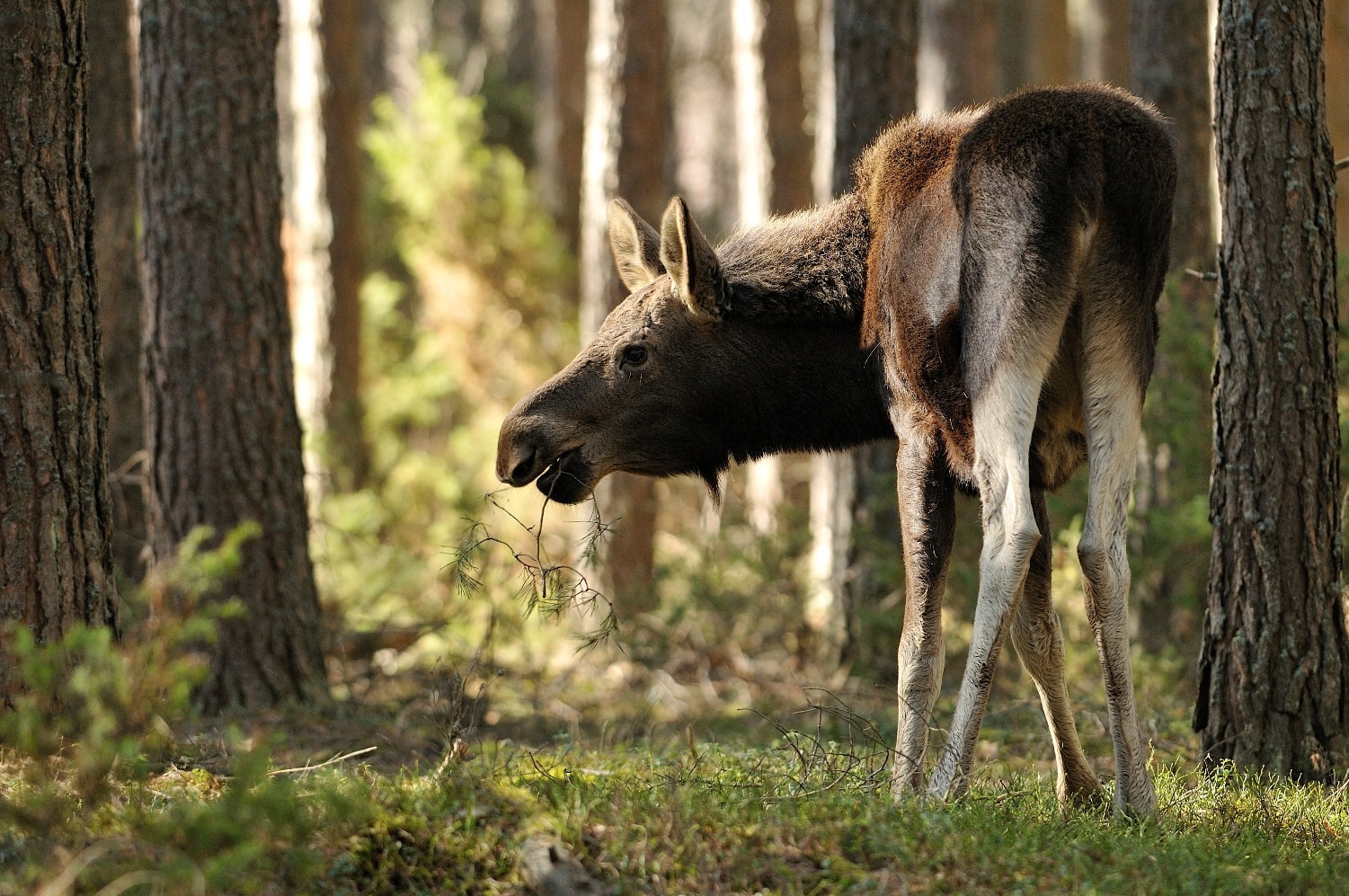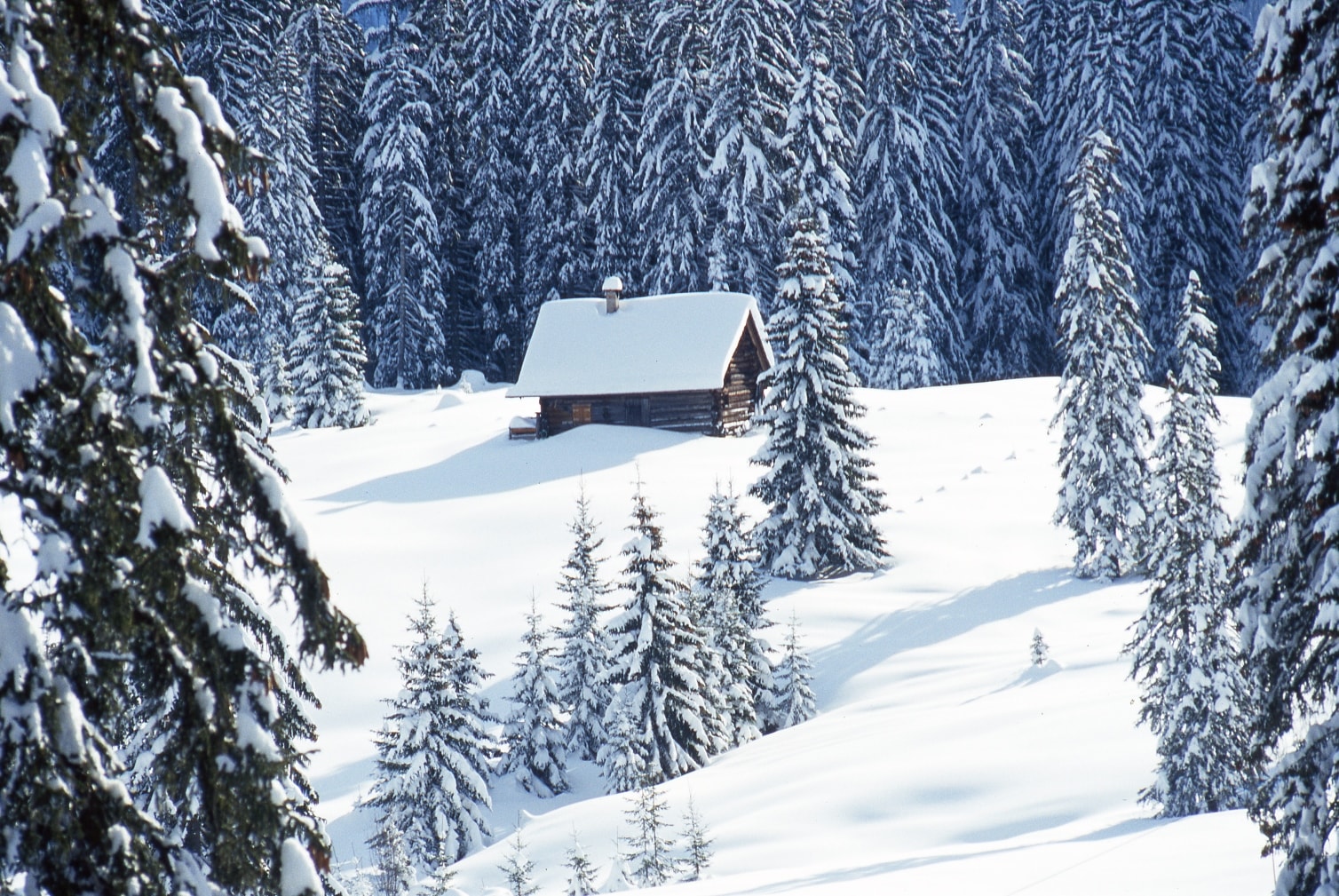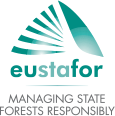Managing European Forests Responsibly – For People, Climate and Nature

Sustainable and multifunctional forestry, Poland. Source: Robert Antosz
More than 1/3 of Europe is covered by forests, providing a wealth of natural resources, delivering important economic, environmental and social values for the benefit of all Europeans and an enormous potential to mitigate climate change. Up to 1/3 of Europe’s forests are owned by States, which means that they belong to the citizens of Europe! State Forest Management Organizations look after Europe’s forests and practice multifunctional and sustainable forest management of the highest standards for the benefits of all.
State Forests Deliver
European State Forest Management Organisations adhere to the principles of sustainable forest management based on the following triple bottom line of sustainability:
Economic Value
- Acting as a cornerstone of Europe’s bioeconomy by producing over 1/3 of the EU’s timber harvest
- Creating and maintaining economic prosperity and jobs, especially in Europe’s rural areas
- Serving as reliable partners for research and innovation in the forest-based sector
- Leading the way in providing the necessary conditions for Europe to move towards a bio-based green economy
Environmental Value
- Acting as forerunners in the use and development of ecologically sound silvicultural methods of sustainable forest management that allow forest ecosystems to adapt to climate change
- Maintaining a home for biodiversity and protecting endangered species through the management of most of Europe’s Natura 2000 network and other protected areas
- Helping to regulate and control changes in the climate by providing carbon sinks and carbon-neutral raw materials
- Supporting fundamental natural processes such as nutrient and water cycles and protecting the soil
- Maintaining forest infrastructures to make them resilient to diseases, flooding, erosion, and fire hazards
Social Value
- Offering a significant number of ecosystem services and other non-material benefits for the general well-being of all Europeans
- Provisioning of clean air and water supplies
- Creating and maintaining recreational areas open to the general public for hiking, wildlife observation and other outdoor activities
- Maintaining scenic and natural heritage areas of cultural value
- Provisioning of wild food and game
Sustainable Forest Management – a Pan-European Story
Managing forests sustainably means to manage and use the forests in such a way that future generations will benefit from forests as much as, and possibly even more than, we do now. Their biodiversity, productivity, regeneration capacity and vitality are maintained while leaving all interconnected ecosystems intact. Forests that are managed sustainably will maintain their potential to fulfill relevant ecological, economic and social functions.

Young elk in a Polish state forest. Source: Karol Zalewski
The European Ministers responsible for forests have defined Sustainable Forest Management (SFM) through the following six pan-European criteria:
- Maintenance and appropriate enhancement of forest resources and their contribution to global carbon cycles
- Maintenance of forest ecosystems’ health and vitality
- Maintenance and encouragement of productive functions of forests (wood and non-wood)
- Maintenance, conservation and appropriate enhancement of biological diversity in forest ecosystems
- Maintenance, conservation and appropriate enhancement of protective functions in forest management (notably soil and water)
- Maintenance of other socioeconomic functions and conditions
Multifunctional Forestry
The functions of forests are manifold and often the same forest area needs to provide a mix of functions simultaneously. Forests are habitats for many plants and animals and they provide a very high degree of biodiversity. At the same time, they are beautiful places for recreation, such as hiking and jogging, for observing nature and for children to play and explore. They deliver oxygen and filter the air, their roots store and filter water. Growing trees absorb CO2 and thereby mitigate climate change. The forest is a working place for many people. The harvesting, processing and use of the wood from forests contribute to rural development and jobs. The above are just some examples of the many functions our forests provide and why sustainable forest management is an essential part of achieving Europe’s economic, environmental and social objectives.
Forest management practices are adapted to diverse policy goals and social expectations. These vary from one forest to another. In forests close to cities, for example, forest managers will pay special attention to the need for recreation areas whereas in forests with very high diversity and rare species, conservation is especially important. Other forests are valued for their high productivity or the role they play in controlling erosion. The main focus of a forest’s function does not mean that other essential functions are neglected. Sustainable multifunctional forest management, as applied in European state forests, aims to balance the complex and sometimes conflicting sets of demands on forests, for the benefit of all.
Use Wood! Mitigate Climate Change!
Forests play a key role in the mitigation of carbon emissions. It is estimated that EU forests and the forest sector currently contribute with an overall climate change mitigation impact that amounts to about 13% of total EU emissions. Forests and good forest management are the most cost-effective options to reduce emissions and contribute to the goals of the ambitious Paris Agreement that aims to limit the global temperature increase to well below 2°C above pre-industrial levels by the end of the century.

In the thick of the forest, Poland. Source: Krzysztof Pawlowski
Growing trees take up carbon dioxide from the air through photosynthesis and store carbon in their woody structure during the growth period of their life cycle. As a tree matures, its rate of growth slows down, and the amount of CO2 sequestration decreases until the rotting wood of a dead tree releases CO2 back into the atmosphere.
The ideal time for harvesting varies mainly in function of the intended use of the wood and the lifetime of a tree which can range between approximately 50 years for fast growing species such as birch to more than 200 years for slow growing species such as oak. Forest managers are able to regulate the harvesting and the regeneration of trees through adjusting appropriate silvicultural techniques, boosting the CO2 sequestration rate of forests while maintaining the many other social, cultural, economic and environmental services they are expected to provide. They contribute to reducing fossil emissions and strengthening low-carbon economic growth. As long as forests are managed sustainably, the overall CO2 balance on a landscape scale will be positive.
In addition to being a renewable raw material, wood has a great potential to store carbon in numerous wood-based products that can replace energy-intensive materials. After a tree is harvested, it continues to act as a carbon store when it is used in such traditional industries as construction, furniture, pulp and paper, as well as the many new bio-based industries which have emerged in recent years. According to scientifically proven estimates, every cubic meter of wood used as a substitute for other building materials reduces CO2 emissions to the atmosphere by an average of 1.9 tons of CO2 equivalent.
Woody biomass from forests and residues is the largest source of renewables in Europe. Bioenergy currently represents 60% of the EU’s total consumption of renewables. Using modern wood-based energy carriers (liquid, gas, wood chips or pellets) made from harvesting and industrial residues from sustainably managed forests is climate smart compared to the use of fossil energy. The majority of bioenergy is generated from biomass that originates from sustainably managed forests. It can be used for heating, electricity generation and transport fuels. Wood for use as an energy source comes not only in the form of residues from final tree harvesting but also from thinning and other sustainable forestry practices. Wood for energy use can also be derived as a by-product from the downstream processing of wood by manufacturing, for example in the form of off-cuts, trimmings, sawdust, shavings, wood chips or by-products of the pulp industry. End-of-life wood and paper products can also be used as a source of energy.
A Boost to the Bioeconomy
Managing forests, harvesting trees, processing timber and manufacturing wood products provide jobs to many people thereby playing an important role in the economic development, employment and prosperity of Europe, particularly in rural areas.

Hut in mountain spruce forest in the winter, Austria. Source: ÖBf/S. Gamsjäger
EUSTAFOR members harvest around 1/3 of the 400 million m³ timber logged annually in the EU. But more than 800 million m3 of wood is used in the EU every year. European state forests have a significant unused resource since only approximately 60-70% of the annual growth in state forests is made available for wood supply. They therefore have a great potential to contribute towards building a resource efficient and green European economy.
Increasing the use of domestically produced biomass can help diversify Europe’s energy supply, providing energy security, create economic growth and jobs and lower greenhouse gas emissions. A wise, sustainable utilization of Europe’s forests is key to finding solutions to major issues within the EU and worldwide. European forests have a role to play in working towards achieving the goals set out by the European Commission in its Bioeconomy Strategy (2012) and 2050 Low-Carbon Economy Roadmap.
A Haven for Biodiversity
Apart from a few rare exceptions, forests in Europe have, throughout the centuries, been influenced by human activity. Sustainably managing these semi-natural forests can provide an even higher degree of biodiversity than natural forests at times. In most cases, forest management is not only compatible with the conservation of biodiversity, but actually actively contributes to its maintenance and enhancement.
Harvesting and thinning operations open up the forest canopy, allowing more light to reach down through the lower levels of the forest, encouraging dormant seeds to germinate, providing light for plants to grow and flower and warmth for cold-blooded animals. This type of forest management mimics natural dynamics and promotes tree species that would otherwise not have a chance to thrive. There are always some trees that are excluded from harvesting because they serve as habitat trees for birds, beetles and other animals that live in their holes. Some trees are allowed to decay in order to provide the rotten wood necessary for the survival of wood pickers and stag beetles.
It cannot be overstated how important Europe’s forests are for biodiversity. European state foresters have a wide experience of integrating biodiversity conservation into their forestry practices. This is reflected in the fact that around half of the total area of the European Natura 2000 network – the largest network of protected areas in the world – consists of forests, most of them in state forests. The Natura 2000 network protects Europe’s most valuable and threatened species and habitats and almost 40% of European state forests are protected and protective forests.
(Article by EUSTAFOR / published in the Revolve magazine page 10 and at the Revolve website)
Published 01/04/2016

